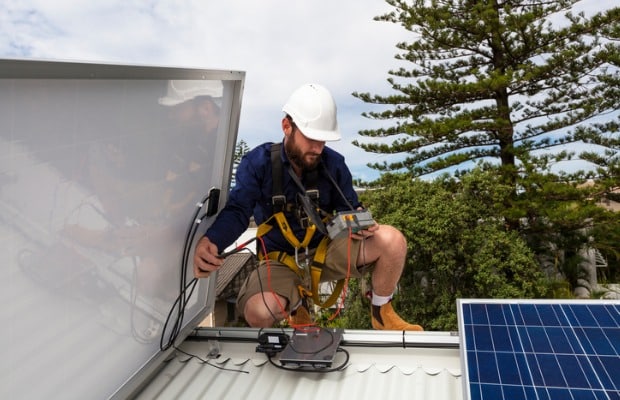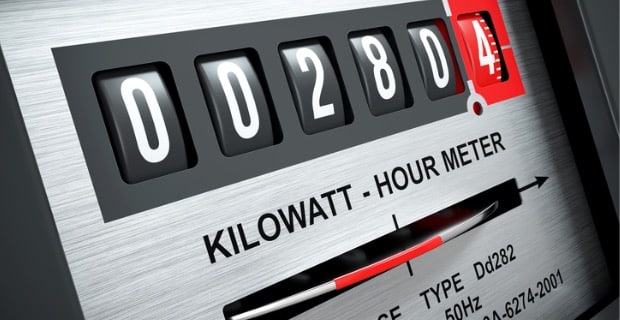Australians are among the world’s leaders in embracing solar energy and have the best solar energy conditions. Solar panels are productive all year round due to the year-round availability of sunlight. Additionally, various solar incentives offered by Australia’s local, state, and federal governments encourage people to switch.
Families using a solar power panel can lower their monthly expenses and carbon footprint. Only some people are comfortable with the idea of living entirely off the grid and relying just on solar energy, but with Net Metering, you can get the best of both worlds.
You can easily get FREE solar quotes from Energy Matters, allowing you to explore the potential benefits of solar energy for your home without any commitment.
What is net metering?
Solar Net Metering is a method that allows typical homes and businesses to use solar power while being plugged into the existing electrical grid. Electrical utility providers use the billing technique to reward customers using solar panel systems known as net metering. Solar panel owners can link their systems to the grid and supply other customers with solar power in exchange for credits.
How does Net Metering work in Australia?
A two-way reading is provided via net metering. It can record how much solar energy you use and feed it into the grid. If you had a net metre to take advantage of solar feed-in tariffs, it could calculate how much you owe for the grid.
Import demonstrates how much power you draw from the grid. You import energy from the grid when your home consumes more energy than your solar panels can generate. Each kWh of electricity you import is subject to the retail electricity rate. Depending on your tariff, the cost per kWh might range from 22c to 55c.
Export indicates the amount of solar energy you provide to the grid. You export when your solar panels produce more energy than your home can need at any time. You get compensated with a feed-in tariff for each kWh of electricity you export.
Remember:
- The important next step after installing your solar system is setting up your metre.
- Customers who already have smart metres must set them up for net metering.
- Customers using basic metres will require a whole new metre that is solar-ready.
- Upgrading to a net metre is a part of the solar installation process for customers in QLD and VIC who have a new Origin solar system.
- In all other states, customers who own non-Origin solar systems must request net metering from their current electricity provider.
Energy Matters has a nationwide network of trusted local installers ready to provide you with up to 3 Free Solar Quotes. Complete our quick quiz and begin your solar journey today!
What is a feed in tariff (FiT)?
Every household in Australia receives payment from their electricity retailer for any excess solar energy produced by their system and exported to the grid. A feed in tariff is the amount that appears as a credit on your energy bill. The feed-in tariff’s value varies between states and among electricity retailers.
Surplus electricity is credited at a rate different from the retail price when your electric provider applies a feed-in tariff (FIT) for solar power. Given that the local electric provider continues to bear the cost of transmission and distribution, this FIT is usually lower. In other words,
- Costs for production, transportation, and earnings are all included in your electricity-generated tariff.
- Only the avoided generation costs are used to determine your solar FiT.
Types of Net Metering
Virtual Net Metering
With this system, you can benefit from solar energy without worrying about installing solar panels because it transfers and supports your household’s energy needs using electricity from a solar panel site.
Aggregate Net Metering
Using solar energy, one home or apartment can support and power another.
Remote Net Metering
A system designed to assist farms and other non-residential customers in accumulating as much credit as possible to lower their electricity bills.
Measurement of solar power system
Solar Power in Australia has two measurement systems: Solar Net Metering and Gross Net Metering.
Solar users that employ net metering can receive payment for any extra generation not used by the household. When solar customers use gross metering, their solar generations are paid for and exported directly to the grid.
The import and export of power are measured separately using a gross metre. In this scenario, you simultaneously use electricity from the grid while supplying the energy your solar energy system generates to the grid. While you pay for the electricity you consume, you also get paid for the electricity you supply to the grid at the end of the month.
Benefits of the Net Metering approach
Net metering provides several advantages for both the homeowner and the environment alike. This list a couple of benefits of deploying a gridded solar panel system.
Using solar energy significantly reduces your carbon footprint. Increasing your independence can help preserve our planet’s priceless natural resources. Traditional electric or gas-powered generators are far less environmentally friendly than solar power, making you more conscious of needless energy use.

Your homes, cabins, garages, sheds, and even cars can all be equipped with solar panels or solar panel kits. Whether you live in an urban home or many buildings on a rural farm, everyone can gain from using solar power.
Your energy bills will drop if you reside in a sunny place. You can make money through Net Metering if your solar energy production is sufficient to meet your own energy needs. You can receive credit for any extra solar energy you send to the grid!














































